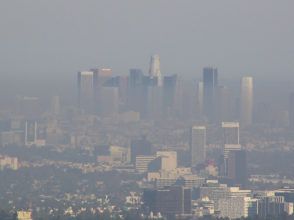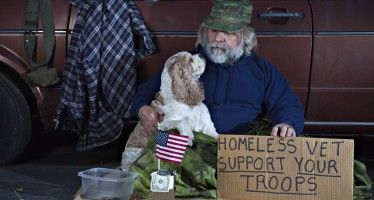Cap-and-trade deal reached, heads to Gov. Brown for approval
 Gov. Jerry Brown and legislators reached an agreement on Wednesday on what to do with around a billion dollars of cap-and-trade revenue.
Gov. Jerry Brown and legislators reached an agreement on Wednesday on what to do with around a billion dollars of cap-and-trade revenue.
The deal was announced earlier in the day and was approved by dinner after a longstanding battle between legislative leadership, who had a long list of ways to spend the money, and Brown, who had yet to give his blessing.
“California’s combating climate change on all fronts and this plan gets us the most bang for the buck,” Brown said in a statement when the deal was announced. “It directs hundreds of millions where it’s needed most – to help disadvantaged communities, curb dangerous super pollutants and cut petroleum use – while saving some for the future.”
Forty percent of cap-and-trade revenue will go to a general fund for programs to reduce greenhouse gas emissions. The rest is doled out with 25 percent going to high-speed rail, 20 percent for affordable housing and sustainable communities grants, 10 percent for intercity rail capital projects and 5 percent for low-carbon transit projects.
Low revenue and legality
The spending plan comes at an interesting time for the cap-and-trade program, which allows businesses to purchase at auction GHG emission credits to exceed state-imposed limits. The money is to be spent on programs that reduce GHG emissions.
The last two quarterly auctions have fallen flat, greatly missing revenue targets, and the program itself faces legal challenges as opponents argue it’s an illegal tax.
Earlier this week, the Legislature approved a measure to add an oversight committee of the California Air Resources Board. CARB created the cap-and-trade program.
The deets
Specifically, the plan passed Wednesday allocates the funding as follows:
- $368 million to the Air Resources Board, including:
- $133 million to the Clean Vehicle Rebate Program.
- $80 million to the Enhanced Fleet Modernization Program, Plus-Up Pilot Project and up to $20 million of this amount may be used for other light-duty equity pilot projects.
- $150 million for heavy-duty vehicles and off-road equipment investments.
- $5 million for black carbon wood smoke programs.
- $140 million to the Office of Planning and Research for the Strategic Growth Council to provide transformative climate communities grants.
- $135 million to the Transportation Agency for the Transit and Intercity Rail Program.
- $80 million to the Natural Resources Agency for the Urban Greening program.
- $65 million to the Department of Food and Agriculture, including:
- $50 million for the early and extra methane emissions reductions from dairy and livestock operations.
- $7.5 million for the Healthy Soils Program.
- $7.5 for the State Water Efficiency and Enhancement Program (SWEEP).
- $40 million to the Department of Forestry and Fire Protection, including:
- $25 million for the Healthy Forest Program.
- $15 million for urban forestry programs.
- $40 million to the Department of Resources Recycling and Recovery for waste diversion and greenhouse gas reduction financial assistance.
- $20 million to the Department of Community Services and Development for weatherization and renewable energy projects.
- $10 million to the Department of Transportation for the Active Transportation Program.
- $2 million to the Office of Planning and Research for the Strategic Growth Council to provide technical assistance to disadvantaged communities.
Related Articles
L.A. homelessness draws federal attention
Struggling to slow L.A.’s spike in homelessness, city leaders have booked an appointment with the federal government. “Secretary Julian Castro
California Now a 'Zombie State'
MAY 23, 2011 By JOHN SEILER In our 18 months online, we at CalWatchDog.com have detailed the massive burden of
Gov. Brown under fire for rail firm campaign contribution
Governor Jerry Brown is under fire for the timing of a max-out contribution from a high-speed rail contractor to his re-election campaign. Brown



